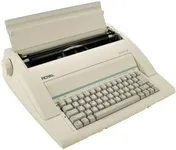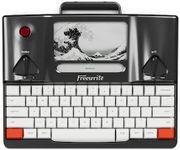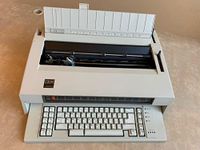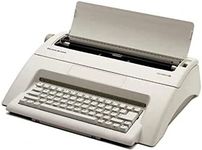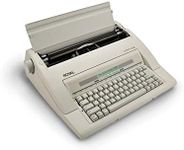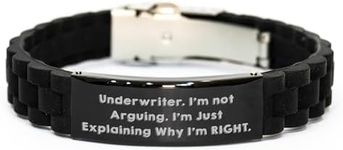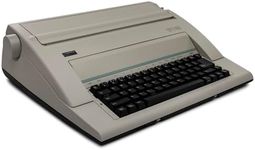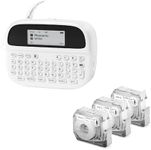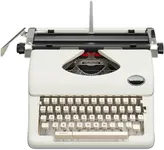Buying Guide for the Best Electronic Typewriters
Choosing the right electronic typewriter can be a rewarding experience, especially if you know what to look for. Electronic typewriters combine the simplicity of traditional typewriters with some of the conveniences of modern technology. When selecting an electronic typewriter, it's important to consider several key specifications to ensure you get a model that fits your needs. Here are the main specs to consider and how to navigate them.Typing SpeedTyping speed, measured in characters per second (CPS), indicates how fast the typewriter can print characters. This is important because a higher typing speed can make your typing experience smoother and more efficient. Typing speeds typically range from 10 to 20 CPS. If you type quickly or have a lot of work to get through, a higher CPS will be beneficial. For casual or slower typists, a lower CPS may be sufficient.
MemoryMemory in an electronic typewriter refers to its ability to store text. This can be useful for repetitive tasks or for storing frequently used phrases. Memory capacity can vary from a few lines to several pages. If you need to store and recall text often, look for a typewriter with more memory. For basic typing tasks, minimal memory will suffice.
Display ScreenSome electronic typewriters come with a small display screen that shows a few lines of text. This can help you review and edit your work before printing. The size and clarity of the display can vary. If you need to make frequent edits or prefer to see your text before it prints, a typewriter with a larger, clearer display will be helpful. If you are comfortable with traditional typing and minimal editing, a smaller or no display might be adequate.
Correction FeaturesCorrection features allow you to fix mistakes without using correction fluid or tape. These features can include automatic correction, a correction key, or a built-in eraser. The extent of correction capabilities can vary. If you make frequent errors or want the convenience of easy corrections, look for a typewriter with robust correction features. If you are confident in your typing accuracy, basic correction features may be enough.
Keyboard LayoutThe keyboard layout of an electronic typewriter can affect your typing comfort and efficiency. Some typewriters offer a standard QWERTY layout, while others may have additional function keys or ergonomic designs. If you are used to a specific layout or need additional functions, choose a typewriter that matches your preferences. For general typing, a standard QWERTY layout will usually be sufficient.
Print QualityPrint quality refers to the clarity and sharpness of the characters printed on the paper. This can be influenced by the type of ribbon used and the typewriter's printing mechanism. Higher print quality is important for professional documents or if you want your work to look neat and legible. If print quality is less of a concern, a typewriter with standard print quality will be adequate.
PortabilityPortability is determined by the size and weight of the typewriter. If you need to move your typewriter frequently or have limited space, a more compact and lightweight model will be beneficial. For stationary use, a larger typewriter with more features might be preferable. Consider how and where you will use the typewriter to determine the right level of portability for you.
